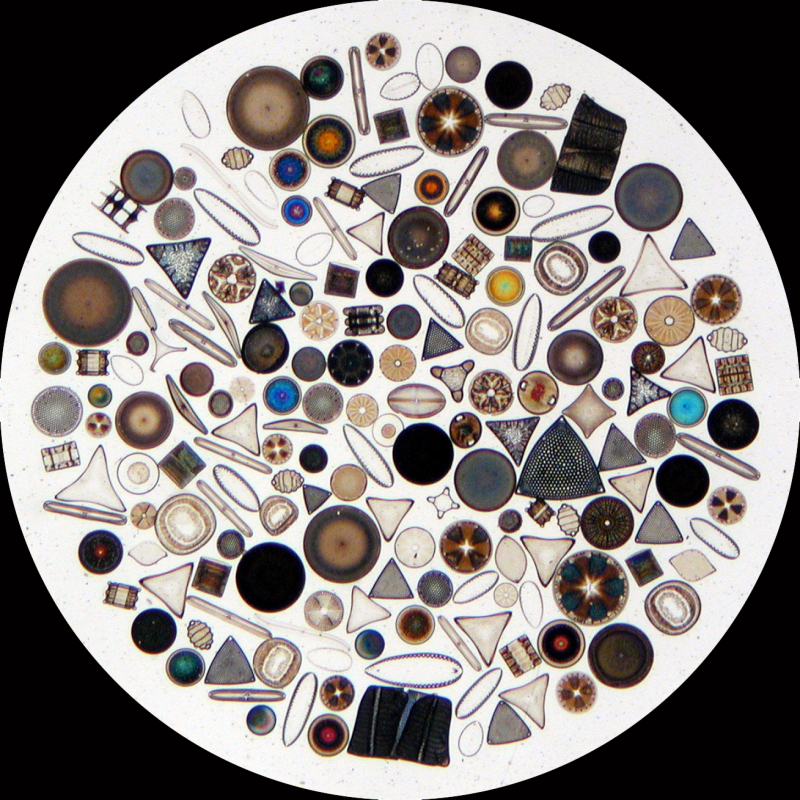What Are These Hypnotising Structures?
These objects might look like tiny pieces of plastic or even aluminium, but, in fact, they are living organisms!
Diatoms are mostly unicellular algae, common types of phytoplankton. They are usually bilaterally symmetrical, but the symmetry is imperfect, since one of their valves is always smaller than the other, allowing it to fit inside the edge of the other. Radial symmetry is also common.
Their evolution started sometime between 1.2 an 0.7 billion years ago when a heterotrophic cell ingested the ancestor of an autotrophic green algal cell and the ancestor of an autotrophic red algal cell, and instead of getting digested, the two remained inside the heterotroph as endosymbionts. They ancestral diatom evolved around 70 million years ago, as fossils from carbonaceous cherts near Huepac, Sonora, Mexico suggest.
They are extremely important as producers: these protists contribute up to almost a half of the total oceanic primary production, and a quarter of global oxygen output!
Fossilised diatoms create diatomaceous earth, or diatomite, which is a siliceous, soft sedimentary rock, often used as a filtration aid, absorbent, thermal insulator, abrasive in tooth paste, or even as a stabilising component of dynamite!

Photo credit: Wipeter
| Common name: | Diatoms |
| Unranked group: | Sar |
| Clade: | Stramenopiles |
| Phylum: | Ochrophyta |
| Class: | Bacillariophyceae |
| Scientific reading: |